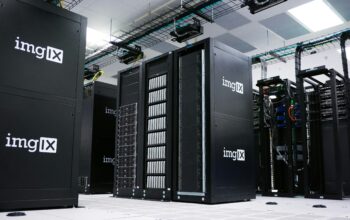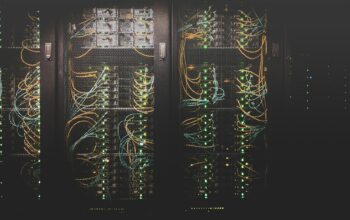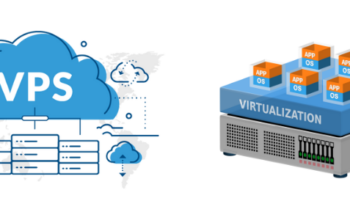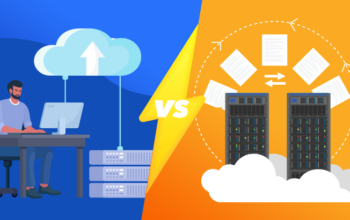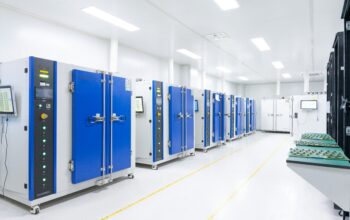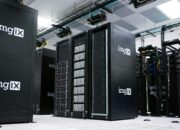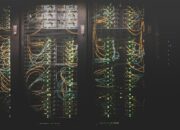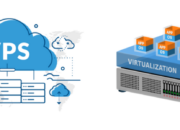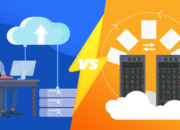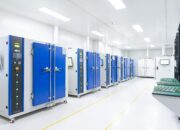Uzone.id – The introduction of 5G technology is changing the way data centers operate, which means that more emphasis will need to be put on edge computing. Instead of relying solely on centralized servers for data storage and processing, edge computing works closer to where information is generated from.
In terms of capitalizing on the full potential of 5G, nothing holds as much promise as this strategy does. Lower latency demands faster data processing times required by users across the globe are forcing businesses into adopting new models such as this one it may be regarded simply at first but should not remain so after some careful thought has been given.
The Consequences of 5G On Data Centers
The speed and connectivity promised by 5G are expected to bring about an era of unprecedented innovation. However, these capabilities can only be fully utilized if our infrastructure can handle them too. With the current system design, traditional data centers may not be able to cope with increased traffic volume or processing requirements brought about by higher speeds. A possible solution lies in decentralization through edge computing where physical distance between a device and its corresponding server causes significant delays due to latency issues.
Edge computing offers faster response times because it processes information close enough for end-users who need it most thus reducing this time greatly according to Gartner’s report, “75% enterprise generated data will be created/processed at the edge” (up from less than 10%).
This transition underscores the growing significance attached to digital infrastructure in general terms but also specifically regarding points located further away from central ones being used for carrying out various operations within networks themselves.
Benefits Of Edge Computing
1. Reduced Latency:
Edge computing reduces latency more than any other aspect does instead of traveling long distances back and forth between devices sending things like commands or requests (known as round trips), it sends them straight away.
With this method, there is no need for data to travel long distances between devices and centralized data centers which results in delays. This is particularly important for applications such as autonomous vehicles, augmented reality (AR), or virtual reality (VR) where real-time data processing is required.
2. Increased Speed Of Data Processing:
Edge computing ensures that information is processed closer to the point of generation leading to quicker decision-making processes where necessary a good example is the healthcare sector since lives can be saved if things are done fast enough based on what doctors receive from patients’ bodies at any given moment.
3. Better User Experience:
The ability of edge computing to reduce latency and process data faster translates into improved user experience across various sectors smart cities being a good case in point. In such scenarios, systems can be monitored continuously in real-time with traffic management becoming more effective thus leading to a smooth flow of vehicles.
4. Scalability And Flexibility:
Instead of relying on one central location for all computation workloads like traditional data centers do, this approach allows distribution tasks among several nodes hence better load balancing as well as resilience it’s also worth noting that these nodes may not necessarily be located within proximity but rather far apart thereby making them more resilient against failures affecting multiple points simultaneously.
2. Manufacturing:
To improve efficiency and reduce downtime, the manufacturing industry has turned to edge computing. It makes real-time monitoring and analysis of production processes possible so that manufacturers can detect and resolve problems quickly. Smart factory solutions have been enriched with real-time insights and operational efficiency through the use of edge computing by Siemens, a leading industrial automation company.
3. Retail:
Edge computing is currently being used in the retail sector for better customer experiences and streamlined operations. Real-time analysis of customer behavior can be done using edge devices which enables personalized marketing while also improving inventory management. Take Walmart as an example they are looking into how they can utilize this technology to optimize their supply chain as well as enhance in-store experiences for customers.

Challenges and Future Outlook
Edge computing does have some challenges that need to be addressed despite its many benefits too. One main issue would be managing a decentralized network of edge nodes which is quite complex itself already.
Another thing is ensuring security throughout these distributed nodes could prove difficult considering data integrity also needs to be taken care of. Additionally, setting up infrastructure at the beginning stage might require large initial investments.
Innovations in Cooling Technologies: A significant area where innovation has taken place involves cooling technologies for data centers themselves. The traditional methods though effective consume much energy compared to new approaches such as liquid cooling or free-air cooling among others that have proven much more efficient overall.
For instance, Microsoft tried out underwater data centers which rely on natural ocean coolness thus cutting down energy usage considerably.
AI and Machine Learning: Cloud sustainability has likewise been boosted by artificial intelligence (AI) plus machine learning abilities. These two help save power consumption via workload prediction alongside better workload management respectively. For example, Google uses AI systems to project how much cooling will be necessary in their various data centers thereby enabling them to cut back on electricity used by about thirty percent each year.
Renewable Energy Projects: Many cloud providers are now channeling funds into green energy projects too. AWS among others recently announced many new ventures aimed at supplying power for its data centers from renewable sources which not only reduces carbon footprints left behind but also fosters growth within this sector generally.
“Edge computing is changing the game with regards to data processing and storage. It offers huge improvements in terms of speed and efficiency, especially in a 5G connected world,” explained the Director of Product Management at VMware, Dan Elbaz.
The era of 5G will see a significant shift in the data center industry due to edge computing. Traditional centralized data centers have limitations that can be addressed by moving closer to where the information is being generated or used thus reducing latency among other benefits associated with such moves.
Faster processing speeds for information as well as improved user experience are some advantages offered when organizations adopt this type of technology. It should also be noted that digital transformation efforts across various sectors would not reach their full potential without relying heavily on edge computing as a key enabler point.
The fact that telecommunications, manufacturing, and retail industries have embraced edge computing technologies rapidly demonstrates how versatile they are and why they matter so much today. Those businesses investing in these infrastructures therefore stand better chances over their competitors since they will deliver services faster while still being reliable enough.
In future years ahead AI together with ML advancements shall keep on increasing thereby extending capabilities associated with Edge Computing even further than what we currently know them to be capable of today alone.


